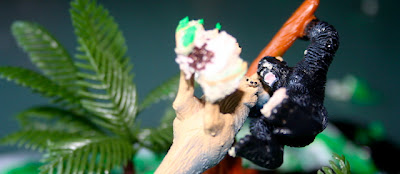 Dasymutilla occidentalisDescription
Dasymutilla occidentalisDescription:5/8-1", antlike, antennae beadlike, thorax and abdomen above: red, covered with short erect red hair, body below and head: black, males winged, females wingless.
Habitat: meadows, forest edges, clover fields.
Range: New York to Florida (Old Wire Road) and Gulf States west to Texas.
Food: Adult drinks nectar. Larva feeds on bumble bee larvae.
Life Cycle: Female searches for bumble bee nests and drops 1 egg beside each brood chamber. Larvae invade brood chambers, feed on bee larvae, and pupate in victim's brood chamber.
Behavior: Run quickly and fight ferociously. They get their name from their painful sting which is so severe that many people claim it could kill a cow.





















































